How to Use CSAT Data to Drive Customer Satisfaction
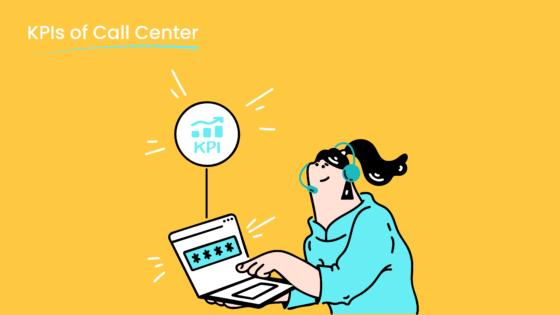
Have you ever wondered why some businesses seem to have loyal customers while others struggle? The secret often lies in how well they understand their customers. CSAT, short for Customer Satisfaction Score, is a powerful tool that helps you measure how to measure CSAT and gauge how happy your customers are. For example, e-commerce companies with personalized marketing strategies see up to a 15% boost in satisfaction. By analyzing CSAT data, you can uncover what’s working and what’s not, allowing you to improve the customer experience and build lasting relationships. With tools like Sobot, you can turn insights into action and watch your customer satisfaction soar.
What Is CSAT and How to Measure It?
Defining CSAT and Its Role in Customer Satisfaction
CSAT, or Customer Satisfaction Score, is a simple yet powerful way to measure how happy your customers are with your products, services, or interactions. It’s like asking your customers, “How satisfied are you?” and getting a direct answer. This metric plays a crucial role in understanding customer satisfaction levels and identifying areas where you can improve.
Why does CSAT matter? It helps you pinpoint what’s working and what’s not. For example, businesses that use CSAT data often discover specific pain points, like slow response times or unclear communication. By addressing these issues, they can enhance customer satisfaction metrics and create better experiences. CSAT also serves as social proof, showcasing positive feedback to attract new customers.
Common Standards for Measuring CSAT
Measuring CSAT is straightforward. Most businesses use surveys that ask customers to rate their satisfaction on a scale from 1 to 5, where 1 means “very dissatisfied” and 5 means “very satisfied.” The formula to calculate the CSAT score is:
(Number of responses rating 4 or 5 / Total number of responses) × 100
For instance, if 80 out of 100 customers rate their experience as 4 or 5, your CSAT score would be 80%. This score gives you a clear picture of your customer satisfaction levels. While an average score of 62.5% is common, benchmarks vary by industry. Retail and e-commerce often aim for higher scores due to their customer-centric nature.
How to Measure CSAT Effectively
To measure CSAT effectively, timing and strategy are key. Send surveys right after meaningful interactions, like a purchase or a support call. This ensures feedback is fresh and relevant. Tailor your surveys to specific customer segments for more targeted insights. For example, you might ask VIP customers about their experience with premium services.

Using tools like Sobot’s Voice/Call Center can make this process seamless. With features like real-time monitoring and data analytics, you can track customer satisfaction scores and identify trends. Automating surveys through platforms like Sobot ensures you capture feedback efficiently, helping you focus on improving customer satisfaction levels.
Collecting and Analyzing CSAT Data
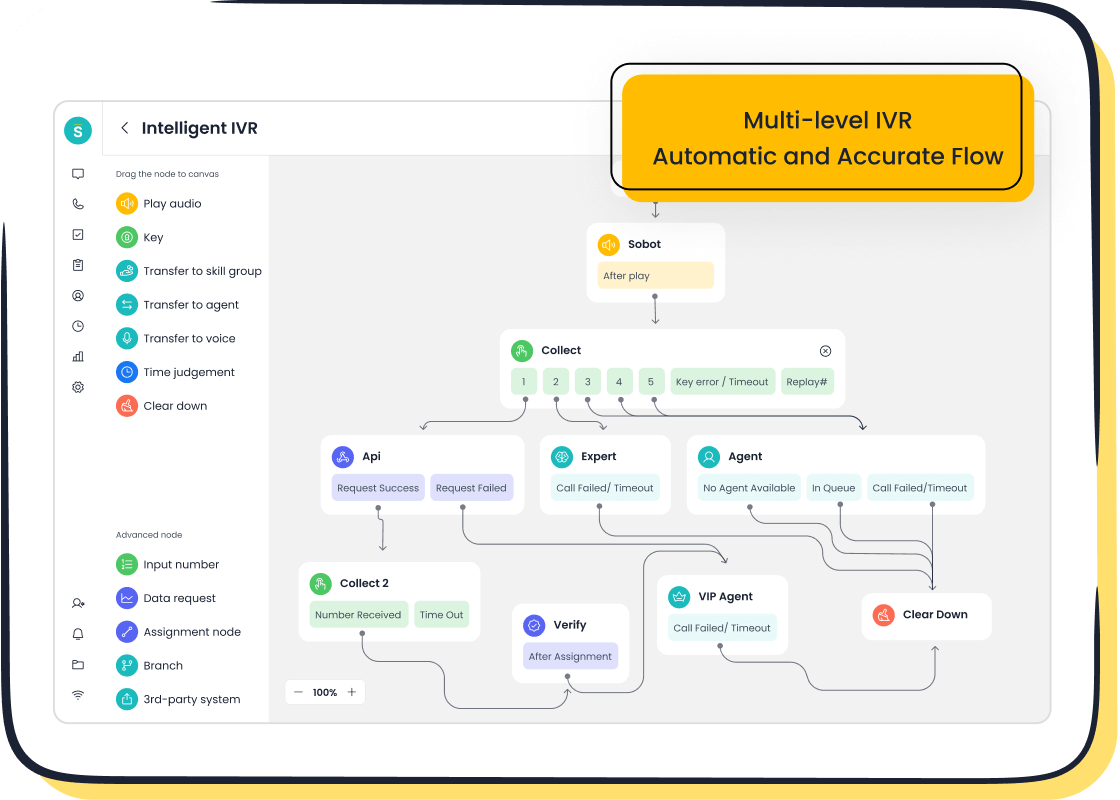
Methods for Collecting CSAT Data
Collecting CSAT data effectively starts with choosing the right methods. You want to gather feedback in ways that are convenient for your customers and provide actionable insights. Here are some proven approaches:
- CSAT Surveys: These are perfect for measuring satisfaction with specific interactions, like a support call or a product purchase.
- Customer Effort Score Surveys: Focus on how easy it was for customers to complete a task, such as resolving an issue.
- Post-Transaction Surveys: Send these immediately after a purchase or service to capture fresh feedback.

Timing is everything. Use strategic triggers, like sending surveys after a resolved ticket or an agent interaction. Tools like Sobot’s Voice/Call Center can automate this process, ensuring you never miss an opportunity to collect valuable customer feedback.
Best Practices for Designing CSAT Surveys
Designing effective CSAT surveys requires you to ask the right questions and keep things simple. Here’s a quick guide:
| Step | Description |
|---|---|
| 1. | Use clear, focused questions to avoid confusion. For example, “How satisfied were you with your recent purchase?” works better than vague queries. |
| 2. | Stick to a consistent rating scale, like 1 to 5, so customers know what to expect. |
| 3. | Optimize timing by sending surveys when customers are most likely to respond, such as right after a positive interaction. |
Sobot’s tools can help you streamline survey design. For instance, its unified workspace allows you to manage surveys across multiple channels, ensuring consistency and efficiency.
Analyzing CSAT Data to Identify Trends and Pain Points
Once you’ve collected CSAT data, the real work begins—analyzing it to uncover trends and address pain points. Use these analytical methods to get the most out of your data:
| Analytical Method | Description |
|---|---|
| Predictive Analytics | Forecast future trends based on past data, helping you anticipate customer needs. |
| Regression Analysis | Understand how different factors impact CSAT scores, like response time or product quality. |
| Factor Analysis | Discover hidden patterns in your data to gain deeper insights into customer satisfaction. |
| Machine Learning | Automate data analysis to detect patterns and suggest improvements. |
For example, if regression analysis shows that slow response times lower satisfaction, you can prioritize faster resolutions. Sobot’s real-time monitoring and analytics features make it easy to track these metrics and implement changes.
By combining these methods, you can turn raw data into actionable insights, improving customer satisfaction and loyalty.
Actionable Steps to Improve Customer Satisfaction Using CSAT Insights
Identify and Address Key Pain Points
To improve customer satisfaction, start by identifying the pain points that frustrate your customers. These could be anything from long wait times to unclear communication. CSAT data is your best friend here. It reveals what’s working and what’s not, helping you focus on areas that need immediate attention.
Tip: Use tools like Sobot’s Voice/Call Center to analyze CSAT data in real-time. Features like call tracking and AI-powered analytics make it easier to spot trends and pinpoint issues.
Research shows that understanding customer pain points involves recognizing their problems, irritants, and unmet desires. For example:
- Customers often complain about slow response times.
- Others may find product instructions confusing or incomplete.
By addressing these challenges, you not only improve customer satisfaction but also boost retention. A case study of MeUndies highlights this approach. They revamped their QA program based on CSAT feedback, achieving a remarkable 99% satisfaction score.
Personalize Customer Experiences Based on Feedback
Personalization is the secret sauce for creating memorable customer experiences. When you act on CSAT feedback, you show customers that their opinions matter. This builds trust and loyalty, which are essential for long-term retention.
Here’s how you can maintain personalization:
- Use customer feedback to identify preferences and expectations.
- Tailor products and services to meet individual needs.
- Offer real-time solutions based on specific customer pain points.
For instance, Sobot’s Omnichannel Solution excels at personalization. Its unified workspace consolidates customer data, enabling agents to deliver tailored experiences across multiple channels. Imagine a customer reaching out via live chat about a delayed order. With Sobot, your agent can access their history instantly and offer a personalized resolution.
Note: Studies show that personalized experiences lead to higher satisfaction rates. Acting on feedback demonstrates genuine interest in your customers, fostering loyalty and retention.
Implement Feedback-Driven Changes Across Teams
Improving customer satisfaction isn’t just about fixing problems—it’s about creating a culture of continuous improvement. Feedback-driven changes can transform your operations and enhance the customer experience across all teams.
Here’s how successful companies do it:
- Chime introduced town hall meetings and suggestion platforms, boosting employee engagement by 35%.
- Nordstrom streamlined its return process based on focus group feedback, increasing customer loyalty by 15%.
| Statistic | Impact |
|---|---|
| Employees receiving regular feedback | 3.6 times more likely to feel engaged |
| Effective feedback improves performance | Up to 39% increase in performance |
Sobot’s solutions make this process seamless. For example, its AI-powered Voicebot automates repetitive tasks, freeing up agents to focus on complex issues. This not only improves team efficiency but also enhances customer satisfaction.
Tip: Regularly monitor progress using tools like Sobot’s analytics dashboard. It helps you track the impact of changes and optimize your strategies continuously.
By implementing feedback-driven changes, you create a ripple effect that improves satisfaction across your organization. Customers notice the difference, and your teams feel more empowered to deliver exceptional service.
Monitor Progress and Continuously Optimize
Improving customer satisfaction isn’t a one-time effort. It’s an ongoing process that requires you to monitor progress and make adjustments as needed. By keeping a close eye on your CSAT data, you can ensure your strategies stay effective and your customers remain happy.
Why Monitoring Matters
Tracking your CSAT scores over time helps you see the bigger picture. Are your efforts paying off? Are your customers noticing the changes? Regular monitoring answers these questions and keeps you on the right track. It also helps you spot trends early, so you can address potential issues before they escalate.
For example, imagine your CSAT score dips after a new product launch. By analyzing the data, you might discover that customers find the setup process confusing. With this insight, you can create clearer instructions or offer additional support, turning a negative experience into a positive one.
Key Metrics to Track
To measure your progress effectively, focus on metrics that provide actionable insights. Here’s a quick overview of what to track:
| Metric | Description |
|---|---|
| Direct Customer Feedback | CSAT provides unfiltered insights into customer perceptions of service quality. |
| Progress Tracking | Regular measurement of CSAT enables tracking of improvements over time. |
| Gathering and Acting on Feedback | Actively soliciting customer feedback through various channels and closing the feedback loop. |
| Monitoring & Analyzing Data | Tracking CSAT scores over time to identify trends and measure the effectiveness of improvements. |
| Customer Feedback Integration | Combining customer satisfaction data with operational metrics for a comprehensive view of service effectiveness. |
These metrics give you a clear understanding of how your efforts are impacting customer satisfaction. They also help you identify areas where you can improve further.
Tips for Continuous Optimization
Once you’ve started monitoring your progress, the next step is to optimize your strategies. Here are some tips to keep in mind:
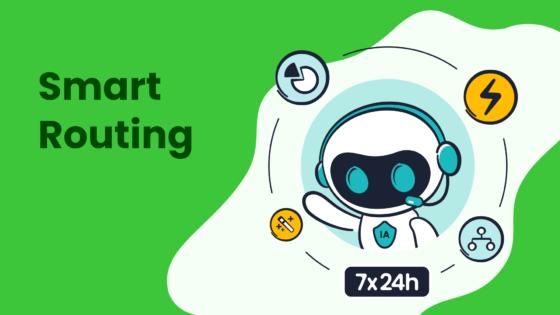
- Act on Feedback Quickly: Don’t let customer feedback sit idle. Use it to make immediate improvements. For instance, if customers mention long wait times, consider implementing smart call routing with tools like Sobot’s Voice/Call Center.
- Test and Learn: Experiment with different approaches to see what works best. Whether it’s tweaking your survey questions or adjusting your support processes, small changes can lead to big results.
- Collaborate Across Teams: Share your CSAT insights with all departments. When everyone works together, it’s easier to create a seamless customer experience.
Pro Tip: Use Sobot’s analytics dashboard to track your progress in real-time. It helps you measure the impact of your changes and ensures you’re always moving in the right direction.
The Power of Iteration
Continuous optimization is all about iteration. You try something, measure the results, and refine your approach. This cycle keeps your strategies fresh and aligned with customer expectations. Over time, you’ll notice steady improvements in your CSAT scores and overall customer satisfaction.
Remember, the goal isn’t just to fix problems—it’s to create an experience that delights your customers at every touchpoint. By staying proactive and committed to improvement, you’ll build stronger relationships and foster long-term loyalty.
Tools and Technologies to Support CSAT Improvement
Leveraging Sobot’s Voice/Call Center for Enhanced Customer Satisfaction
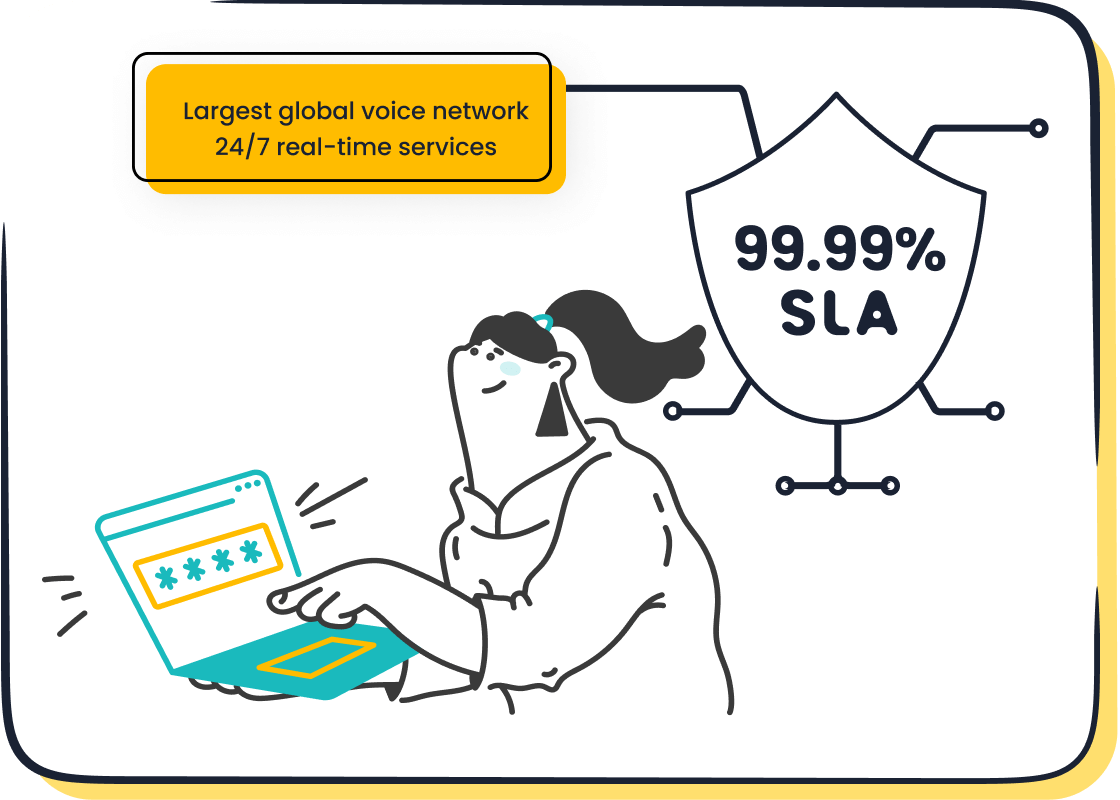
If you’re looking for a way to improve customer satisfaction, Sobot’s Voice/Call Center is a game-changer. It’s designed to streamline communication and make your customer support more efficient. With features like intelligent IVR, smart call routing, and AI-powered Voicebot, you can reduce wait times and resolve issues faster.
Here’s how Sobot’s Voice/Call Center makes a difference:
- Real-Time Monitoring: Track calls as they happen and identify areas for improvement.
- Global Number Availability: Support customers worldwide without worrying about connectivity.
- AI-Powered Voicebot: Handle repetitive queries automatically, freeing up agents for complex issues.
The results speak for themselves. Companies using Sobot’s Voice/Call Center have achieved:
| Metric | Value |
|---|---|
| Reduction in inbound discussion | 20% |
| Positive feedback rate | 96%+ |
| Correct answers rate | 80% |
| Customer satisfaction rate | 95% |
| Self-service question resolution | 22.2% |
| CSAT score | 97% |
| Problem resolution rate | 85% |
| Customer happiness rate | 99% |
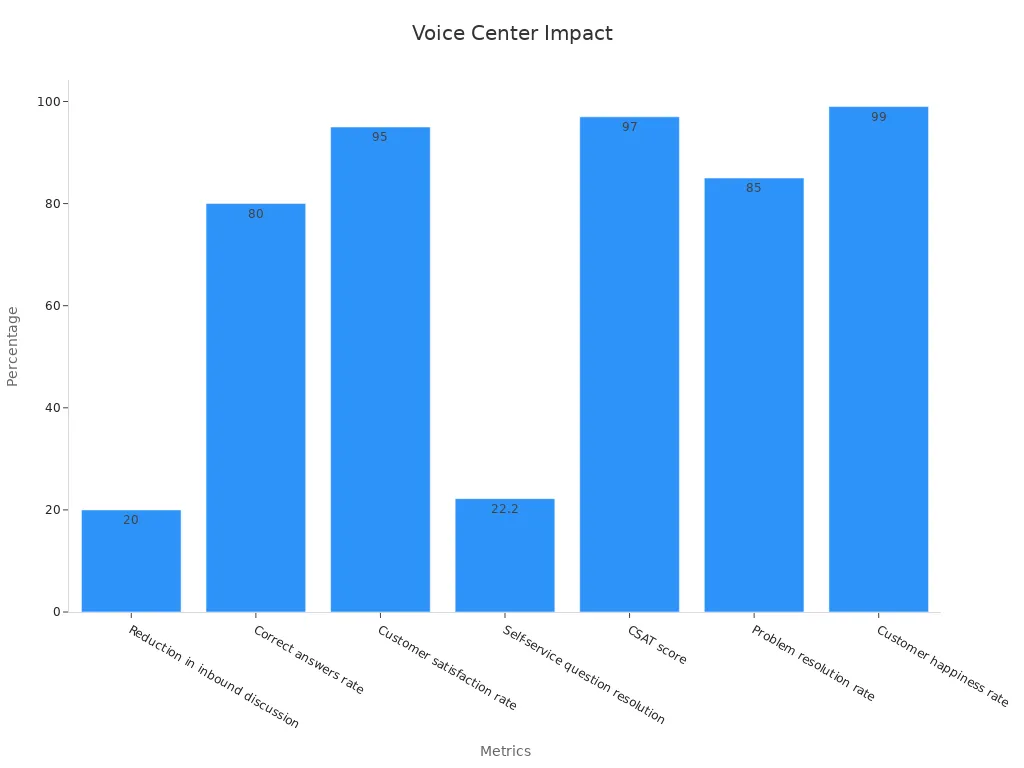
By leveraging these tools, you can create a seamless customer experience that boosts satisfaction and loyalty.
Customer Feedback Platforms and CRM Tools
Customer feedback platforms and CRM tools are essential for understanding what your customers need. They help you collect, analyze, and act on feedback, ensuring your support strategies align with customer expectations.
Take a look at how companies have benefited from these tools:
| Company | Focus Area | Outcome |
|---|---|---|
| ParkBee | Enhancing customer support | Achieved a 20% reduction in customer service contact rate by optimizing services through feedback. |
| Taxfix | Boosting customer retention | Achieved a Net Promoter Score (NPS) of 68 by personalizing user journeys based on feedback. |
| Workwise | Optimizing user experience | Improved user satisfaction by making data-driven decisions based on in-product feedback. |
| Hitta | Improving customer satisfaction | Maintained high satisfaction levels by continuously tracking and acting on customer feedback. |
Platforms like Sobot’s Omnichannel Solution take this a step further. They unify customer data across channels, making it easier for agents to deliver personalized support. Imagine a customer reaching out via email about a billing issue. With Sobot, your agent can access their entire history and provide a tailored solution instantly.
When you act on feedback, you show customers you care. This builds trust and keeps them coming back.
Data Analytics and Reporting Software
Data analytics and reporting software are your secret weapons for improving customer satisfaction. They help you uncover trends, predict future needs, and measure the impact of your strategies.
Here’s what data analytics can do for your support team:
- Pinpoint root causes of issues, leading to faster resolutions.
- Forecast staffing needs and CSAT trends, ensuring you’re always prepared.
- Reduce case abandon rates by analyzing customer feedback and adjusting processes.
For example, a TSIA member used predictive analytics to improve their average speed of answer by 50%. Another member reduced case abandon rates by analyzing CSAT data, directly boosting satisfaction scores.
Sobot’s analytics dashboard makes this process even easier. It provides real-time insights into customer interactions, helping you optimize your support strategies continuously. Whether it’s tracking response times or identifying common pain points, these tools ensure you’re always one step ahead.
Pro Tip: Combine analytics with AI-powered tools like Sobot’s Voice/Call Center to automate repetitive tasks and focus on delivering exceptional customer experiences.
Real-World Applications of CSAT Data
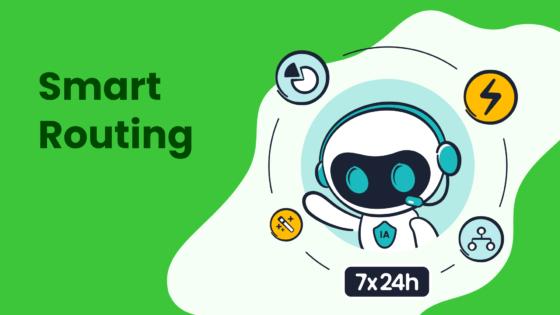
Success Stories: How Samsung Improved Customer Satisfaction with Sobot
Samsung’s journey with Sobot is a prime example of how CSAT insights can transform customer satisfaction. The company faced challenges managing high volumes of inquiries across multiple channels. By adopting Sobot’s all-in-one contact center solution, Samsung unified its communication channels and streamlined operations.
This integration allowed agents to access customer histories instantly, reducing repetitive interactions and improving the overall experience. Sobot’s AI-powered tools handled routine queries, freeing agents to focus on complex issues. VIP customers even received personalized video support, enhancing their satisfaction further.
The results were remarkable. Samsung achieved a 97% satisfaction rate and boosted agent efficiency by 30%. These improvements strengthened customer loyalty and showcased the power of acting on CSAT data.
Lessons Learned from CSAT-Driven Improvements
Improving satisfaction isn’t just about fixing problems—it’s about learning from feedback and applying those lessons. Research shows that higher CSAT scores directly lead to better customer retention. When you prioritize satisfaction, you build loyalty that lasts.
Here are some key takeaways:
- Customers value transparency and clear communication during stressful situations, like delays or service disruptions.
- Empowering employees with the right tools and training enhances the customer experience.
- Personalized offers and flexible rewards significantly boost satisfaction, as seen in Hilton Honors’ loyalty program.
These lessons highlight the importance of listening to your customers and acting on their feedback. Tools like Sobot’s analytics dashboard make it easier to track satisfaction trends and implement meaningful changes.
Industry-Specific Applications of CSAT Insights
CSAT insights aren’t one-size-fits-all. Different industries use them to address unique challenges and improve customer satisfaction. Here’s how CSAT data impacts various sectors:
| Industry | Average CSAT Score | Year | Insights |
|---|---|---|---|
| Software | 78 | 2022 | High competition necessitates exceptional customer satisfaction to meet expectations. |
| E-commerce | 80 | 2023 | Ties for the highest score, emphasizing the need for outstanding customer experience. |
| Finance | 78 | 2022 | Stability in scores indicates a need for continuous improvement in customer satisfaction. |
| Insurance | 76+ | 2023 | Surpasses some sectors but still below the excellent threshold, indicating room for growth. |
| Social Media | 73 | 2023 | Reflects challenges in customer satisfaction, highlighting the need for better support. |
| Travel | 76 | 2023 | Slightly above the overall average, indicating a competitive edge in customer satisfaction. |

For example, e-commerce companies often use CSAT data to personalize the shopping experience, while airlines focus on improving communication during delays. By tailoring strategies to industry-specific needs, you can maximize satisfaction and create memorable experiences for your customers.
Using CSAT data to improve customer satisfaction is simpler than you might think. Start by collecting feedback, analyzing trends, and addressing pain points. Personalize experiences based on what your customers share, and implement changes that reflect their needs. Monitoring progress ensures you stay on track and continuously optimize your strategies.
Why does this matter? Customer-centric companies that prioritize feedback are 60% more profitable. Enhanced satisfaction leads to loyalty, retention, and positive word-of-mouth. Acting on feedback prevents churn and builds trust, which is essential for growth.
Ready to take action? Tools like Sobot’s Voice/Call Center make it easy to measure CSAT, analyze data, and deliver exceptional service. Start leveraging your CSAT insights today to create happier customers and drive success.
FAQ
What is the best way to collect CSAT data from customers?
The easiest way is through surveys. You can send them after purchases or support calls. Tools like Sobot automate this process, ensuring you gather feedback without hassle. Timing matters—ask for feedback when the experience is fresh in your customer’s mind.
How can CSAT data help improve customer satisfaction?
CSAT data highlights what your customers love and what frustrates them. By acting on this feedback, you can fix issues, personalize experiences, and make smarter decisions. It’s like having a roadmap to better customer satisfaction.
Are there tools to simplify CSAT tracking and analysis?
Absolutely! Platforms like Sobot’s Voice/Call Center offer real-time monitoring and analytics. These tools help you track trends, identify pain points, and implement changes that boost customer satisfaction. They’re designed to make your job easier.
How often should you monitor CSAT scores?
Regularly! Monthly tracking works for most businesses. However, if you’ve made big changes, check weekly to see the impact. Continuous monitoring ensures you stay ahead of customer expectations and adapt quickly.
Can CSAT data improve team performance?
Yes! Sharing CSAT insights with your team helps them understand customer needs better. It motivates them to deliver exceptional service. Tools like Sobot’s unified workspace make collaboration seamless, ensuring everyone stays aligned.
See Also
Enhancing Customer Satisfaction Through Effective Live Chat Strategies
Increasing Operational Efficiency With AI Customer Service Tools
Comparative Analysis of Leading Voice of Customer Solutions
Improving E-commerce Customer Satisfaction With Chatbot Technology